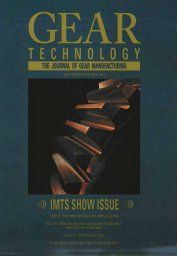The purpose of this article is to discuss ISO 4156/ANSI B92.2M-1980 and to compare it with other, older standards still in use. In our experience designing and manufacturing spline gauges and other spline measuring or holding devices for splined component manufacturers throughout the world, we are constantly surprised that so many standards have been produced covering what is quite a small subject. Many of the standards are international standards; others are company standards, which are usually based on international standards. Almost all have similarities; that is, they all deal with splines that have involute flanks of 30 degrees, 37.5 degrees or 45 degrees pressure angle and are for the most part flank-fitting or occasionally major-diameter-fitting.
